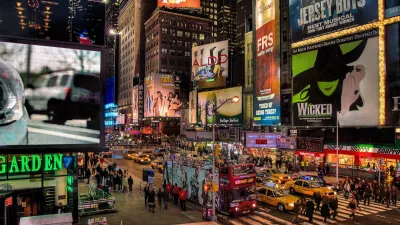A new study by researchers at Children's and the University of Pennsylvania concludes that, contrary to popular perception, cities are safer than rural or suburban areas. Higher rates of fatal car accidents outside cities are largely to blame.

Marie McCullough explains the findings of a new study published online Tuesday in the Annals of Emergency Medicine that examined fatal injury rates across the United States. "Like previous studies, the new one found that homicide rates are higher in cities than the boonies. (Suicide rates were not significantly different.) But the new analysis defied the prevailing perception that cities are innately more dangerous than remote areas. The most rural counties had the highest rate of fatal injuries - 74 deaths per 100,000 residents - compared with 50 deaths per 100,000 in the most urbanized counties."
"People who are considering moving out of cities because of safety concerns may want to 'reexamine their motivations,'" said lead researcher Sage Myers, an emergency medicine physician at Children's Hospital of Philadelphia.
What accounts for the difference? Cars, says McCullough, "the leading cause of accidental death everywhere."
"Crashes caused 28 deaths per 100,000 residents in the most rural counties, compared with 11 deaths per 100,000 in the biggest cities."
FULL STORY: It's safer in cities, but not in Phila.

Manufactured Crisis: Losing the Nation’s Largest Source of Unsubsidized Affordable Housing
Manufactured housing communities have long been an affordable housing option for millions of people living in the U.S., but that affordability is disappearing rapidly. How did we get here?

Americans May Be Stuck — But Why?
Americans are moving a lot less than they once did, and that is a problem. While Yoni Applebaum, in his highly-publicized article Stuck, gets the reasons badly wrong, it's still important to ask: why are we moving so much less than before?

Using Old Oil and Gas Wells for Green Energy Storage
Penn State researchers have found that repurposing abandoned oil and gas wells for geothermal-assisted compressed-air energy storage can boost efficiency, reduce environmental risks, and support clean energy and job transitions.

Poorest NYC Neighborhoods Pay Price for Delivery Boom
The rise of ‘last-mile’ e-commerce warehouses — and their attendant truck traffic and air pollution — is disproportionately impacting the most historically disadvantaged parts of the city.

Greening Oakland’s School Grounds
With help from community partners like the Trust for Public Land, Oakland Unified School District is turning barren, asphalt-covered schoolyards into vibrant, green spaces that support outdoor learning, play, and student well-being.

California Governor Suspends CEQA Reviews for Utilities in Fire Areas
Utility restoration efforts in areas affected by the January wildfires in Los Angeles will be exempt from environmental regulations to speed up the rebuilding of essential infrastructure.
Urban Design for Planners 1: Software Tools
This six-course series explores essential urban design concepts using open source software and equips planners with the tools they need to participate fully in the urban design process.
Planning for Universal Design
Learn the tools for implementing Universal Design in planning regulations.
Heyer Gruel & Associates PA
City of Moreno Valley
Institute for Housing and Urban Development Studies (IHS)
City of Grandview
Harvard GSD Executive Education
Salt Lake City
NYU Wagner Graduate School of Public Service
City of Cambridge, Maryland




























